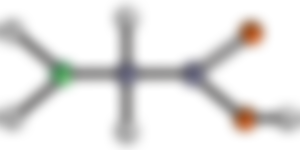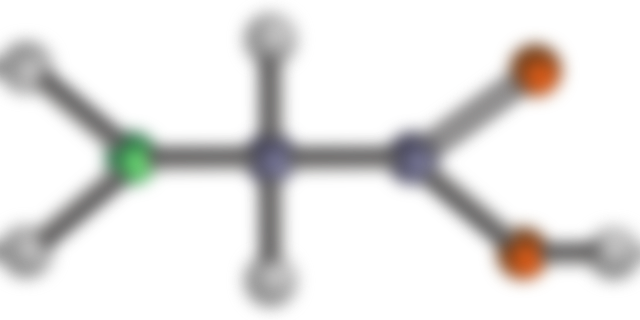Amino Acids: Nutrients & Supplements part II
This is the second article of two, about some individual amino acids and their medical effects. Part one can be found here: Amino Acids: Nutrients & Supplements part I.
In this second part, I will first bring up some conditionally essential amino acids, as the last proteinogenic amino acids in this survey, and after that we will look at some non-proteinogenic ones.
CONDITIONALLY ESSENTIAL AMINO ACIDS
These amino acids (and Proline, which is not disussed below) are not generally essential but can be so under certain circumstances, such as for preterm infants.
ARGININE
Nitric oxide is a vasodilator and increases blood flow, and arginine helps with nitric oxide synthesis. It means that arginine actually helps increasing exercise capacity by increasing the amount of nitric oxide. This is especially useful for people with cardiovascular disease.
The same mechanism is at work during erection, which means that arginine has a potential to provide some help in cases of erectile dysfunction. Results from research are ambiguous, but I suspect that it depends on the individual cause of the erectile dysfunction. It is not one set ailment, but a symptom with a number of possible causes. So arginine may or may not help, depending on the cause.
Perhaps arginine also stimulates the release of growth hormone, which is essential for healing and rejuvenation. Results of research have been unclear though.
CYSTEINE
Cysteine is a precursor to the antioxidant glutathione. It is also possible that it protects against alcohol damage, but that has not been conclusively proved.
GLUTAMINE
Glutamine plays many central roles in the biochemistry of the body, and it is the most abundant free non-essential amino acid in the human body.
GLYCINE
Glycine acts as an inhibitory neurotransmitter. It is also industrially used in the production of artificial sweeteners and taste enhancers and much more. Potentially, it also plays a role in anti-ageing therapy by preventing or reversing age-associated damage of fibroblasts.
TYROSINE
This amino acid helps keeping optimal function of adrenal, thyroid and pituitary glands.

Non- Proteinogenic Amino Acids
CARNITINE
For a fatty acid to be used for energy, it first must be transported into the mitochondria by carnitine. A deficiency of carnitine leads to an increasing level of fats in the blood, fats that could be used by co-enzyme Q10 to produce cellular energy, but which is not reaching the cells and the mitochondria because there is no carrier. In cases of high blood fats, supplementary carnitine should always be considered. Athletes sometimes use it to facilitate the use of fat as energy.
Further, carnitine can beneficially affect anti-oxidation, heart disease, bone structure, diabetes, dementia, and (especially male) fertility.
CITRULLINE
Citrulline in the form of citrulline malate is sometimes taken as a supplement by athletes to enhance perfomance. A study showed that it reduces muscle fatigue.
It is also suspected for being a precursor to nitric oxide, which would cause vascular effects similar to those of arginine. However, this has not been proved.
CYSTINE
Supports the immune system.
GAMMA-AMINOBUTYRIC ACID (GABA)
Gamma-Aminobutyric acid is the major inhibitory neutrotransmitter and it regulates muscle tone. It has a relaxing effect and reduces anxiety. It has been suggested that it is involved in the synthesis of melatonin, and by that have a regulatory effect on sleep and sex drive, but that has never been proved.
GLUTATHIONE
Provides resistance to oxidative stress. Also important for optimal function of the immune system. It is the major antioxidant that is synthesised in the body itself. In addition to that, it is vital for many metabolic and biochemical reactions in every system of the human body.
ORNITHINE
Promotes the removal of urea waste. Suitable to combine with Arginine.
HOMOCYSTEINE
Homocysteine is an amino acid that is interesting from the anti-ageing perspective. A high level of homocysteine in the blood is called hyperhomocysteinaemia. That is a condition associated with an increased risk for a large number of diseases, such as cardiovascular disease, neuropsychiatric illness, renal dysfunction, and fractures.
Homocystein is synthesised from methionine. Levels are rising by alcohol, deficiency of certain vitamins, and in a small number of cases, by a genetic defect. Typically, the level also increases with age.
Levels can be brought down by supplementation of vitamins B6, Folic Acid and B12, preferably combined with taurine, an amino-acid-like compound that is normally a component of bile. The homocysteine will then be recycled to methionine or converted into cysteine.
An alternative method is to give betaine (trimethylglycine, TMG).
The whole series about amino acids:
1. Amino Acids: Nutrients & Supplements part I
2. Amino Acids: Nutrients & Supplements part II
Copyright © 2016, 2019, 2022 Meleonymica/Mictorrani. All Rights Reserved.
(Image by OpenClipart-Vectors/Pixabay, CC0/Public Domain.)
Here you find my articles about vitamins, minerals & other nutrients, and those related to health & medicine.
In my INDEX, you can find all my writings on Read.Cash, sorted by topic.
Interested in health & medicine, join my community "The Mechanisms of Health (d52e)"
My 5 most recent articles:
Amino Acids: Nutrients & Supplements part I

Waooòo! Your article is quite helpful for us.i have share it with my cousin coz he is body builder.it will be helpful for him as well.thank you for sharing such good information with us.